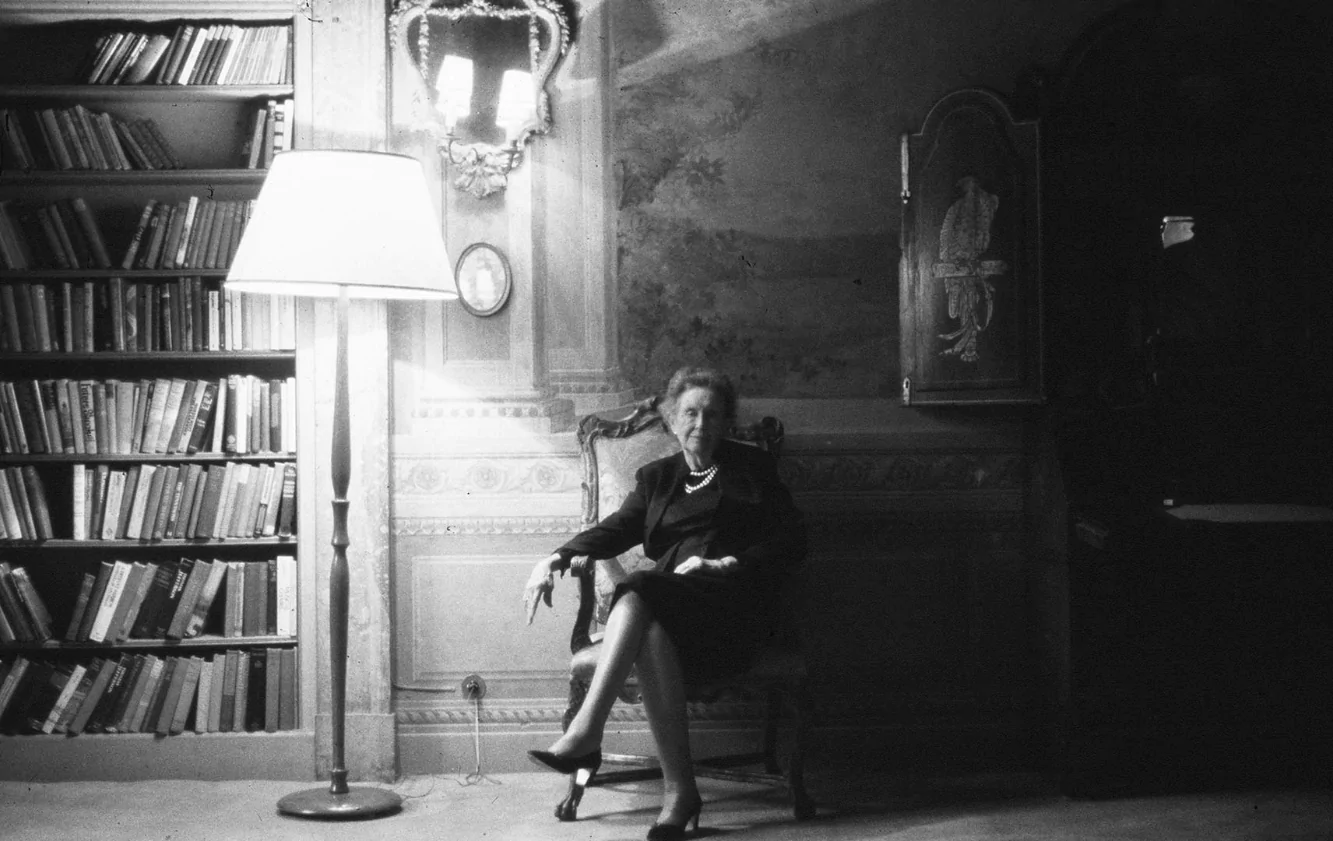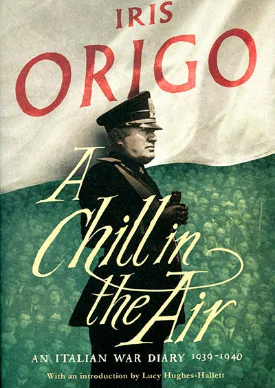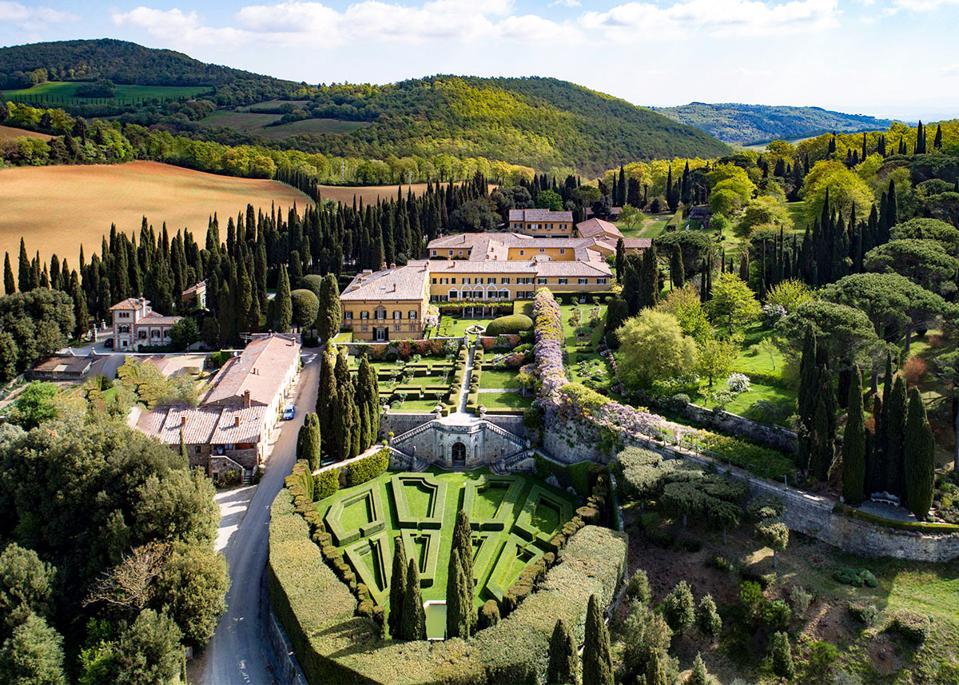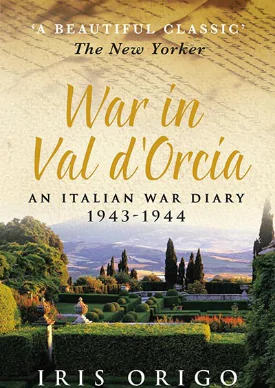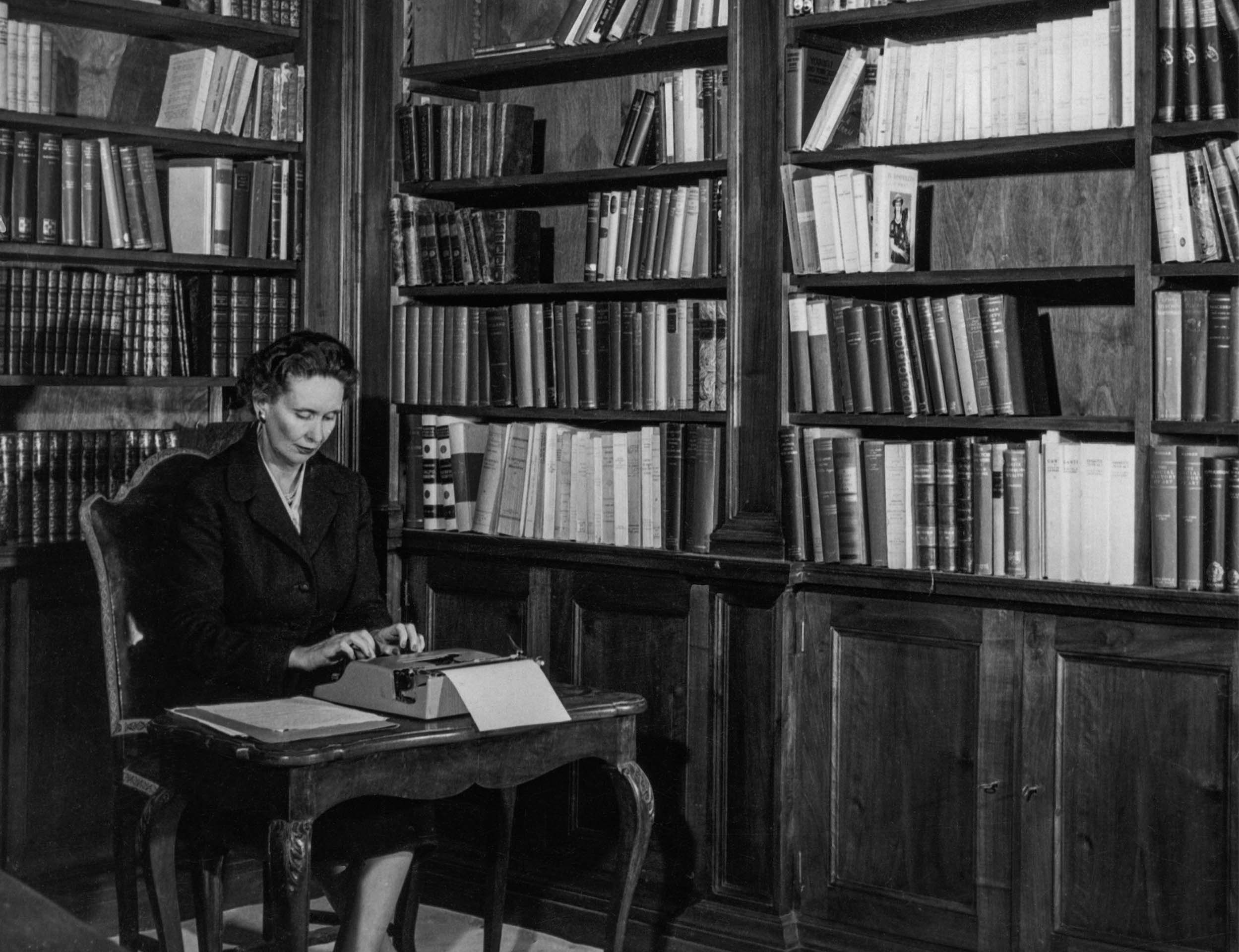1902-1988
Italy, United States, United Kingdom
“The best writer in English about things Italian”, according to the Sunday Times, Iris Origo (1902-1988) was a key figure in the mediation of the Italian cultural heritage in the post-WWII years. Most studies of Origo focus on her biographical profile, with one word—“privileged”—recurring in the presentation of her growing up in the exclusive early-twentieth-century Florentine Anglo-American community. She was the only daughter of Bayard Cutting, heir to a wealthy American family, and of Sybil Cuffe, daughter of the Anglo-Irish Lord and Lady Desart, whose family history dated back to Cromwell’s seventeenth-century Irish expedition. After the premature death of her father, her mother followed his last wish concerning the seven-year-old Iris: “Bring her up somewhere where she does not belong.” Accordingly, she bought Villa Medici, built in 1458 in the hills outside Florence, where Iris grew up amid neighbors like the art critic Bernard Berenson and family friends like the novelist Edith Wharton and the philosopher George Santayana.
Although she made regular visits to England, Ireland and the United States, in 1924 Iris’ ties with Italy were strengthened by her marrying Antonio Origo, a member of the Italian nobility. Together, they bought a 7,000-acre, run-down estate in Val d’Orcia, south of Siena, initiating their lifetime project of recovering the mostly unproductive land and turning it into a model farm, complete with a school and medical care for the labourers. With architect Cecil Pinsent, Origo worked at the restoration of the estate’s villa, la Foce, and at the landscaping of its spectacular Italian gardens. The Val d’Orcia landscape that was to become iconic—winding roads flanked by cypress trees—was actually man-made by the Origos.
After the loss of her first-born Giorgio, who died of meningitis, aged seven, in 1933, Origo started a prolific writing career, contributing to the international appreciation of “things Italian” through her mastery of the biographical genre. Finding her first publisher in Virginia and Leonard Woolf’s Hogarth Press, she made available to the English-speaking public of both side of the Atlantic a variety of characters ranging from Giacomo Leopardi (A Study in Solitude, 1935, reissued in 1953) to Cola di Rienzo (Tribune of Rome, 1938), San Bernardino (The World of San Bernardino, 1962), Lauro de Bosis, Ruth Draper, Gaetano Salvemini, and Ignazio Silone (A Need to Testify, 1983). As an amateur historian working outside the academia, she chanced upon the archive of a fourteenth-century Tuscan merchant, and drew on the wealth of its documentation (some 140,000 letters plus ledgers, account-books, bills of exchange, cheques, insurance policies, deeds of partnership) to provide a fully-fledged portrait of the man Francesco Datini and of daily life in a medieval Italian city (The Merchant of Prato, 1957), widely appreciated as an early example of social history. The allure and connections of her status as noblewoman gained her access to another treasure trove, that is, the correspondence between Lord Byron and his Italian lover Teresa Guiccioli, which she edited in the volume The Last Attachment (1949), a continuing source of valuable information to Byron scholars for the light it sheds on Byron's Italian years.
Origo is also credited with having rescued the post-WWII international reputation of Italians, with the sympathetic yet unrhetorical portrait of their wartime resilience and courage contained in her memoir War in Val D’Orcia (1947), complemented by her posthumously published diary of the year preceding the outbreak of the war, A chill in the Air (2017). Their recent reprint in the New York Review Classics series, together with her 1970 autobiography, Images and Shadows, confirms the renewed interest in her work and in her lifelong construction of Italian culture to an Anglo-American readership.
She kept close ties with the US throughout her life. During one of her many visits, in 1958 she gave a series of lectures at Harvard on “Aspects of social life in Tuscany in the last two centuries of the Middle Ages”, and one at Racliffe College on the art of biography. She was awarded honorary degrees by Wheaton College (1960) and Smith College (1964), and she published essays and articles on The Atlantic Monthly, Cornhill Magazine, Vogue. In Italy she was close to the Italo-Anglo-American circle of Marguerite Caetani, whom she portrayed in an often-quoted essay, and to the group of Italian collaborators of Botteghe Oscure—Elena Croce, Elsa Dallolio, Giovanna Benzoni. To her life-long friend Elsa Dallolio she devoted the only book she wrote in Italian, Un’amica (1988).
Related Vectors
Marguerite Chapin Caetani
Editor, cultural promoter, patron of arts
Sources
Cro, Stelio. Iris Origo. Dalle radici del neorealismo alla solitudine dell’utopia (Montepulciano: Le Balze, 2002).
Cro, Stelio. Il caso Iris Origo. Antologia critica. (Milano: Todariana Editrice, 2010).
Einaudi, Luigi. "Prefazione." In Iris Origo, Il Mercante di Prato (Torino: Einaudi, 1958).
Hughes-Hallett, Lucy. "Introduction." In Iris Origo, A Chill in the Air: An Italian War Diary, 1939-1940 (New York: New York Review of Books, 2017), 1-19.
Lysy, Katia. "Afterword." In Iris Origo, A Chill in the Air: An Italian War Diary, 1939-1940 (New York: New York Review of Books, 2017), 169-184.
Lysy, Katia. "Afterword." In Iris Origo, Images and Shadows: Parts of a Life (New York: New York Review of Books, 2019), 375-382.
Moorehead, Caroline. Iris Origo (London: John Murray, 2000)
Nicholson, Virginia. "Introduction." In Iris Origo, War in Val d'Orcia (New York: New York Review of Books, 2017), 7-17.
Origo, Benedetta. “Between the Valley and the Mountain: The Making of La Foce”. In La Foce: A Garden and Landscape in Tuscany (Philadelphia: University of Philadelphia Press, 2001), 1-55.
Pomata, Gianna. “Dalla biografia alla storia e ritorno: Iris Origo tra Bloomsbury e Toscana.” Genesis 6/1 (2007): 117-156.
Praz, Mario. Cronache letterarie anglosassoni (Roma: Edizioni di storia e letteratura, 1966), III, 316.
Rosini, Sandra. Iris Origo e la sua opera di assistenza all’infanzia (Montepulciano: Le Balze, 2003).
Wilde-Menozzi, Wallis. “Iris Origo, 1902-1988. An Encomium.” South-West Review 75/4 (1990): 483-501.


